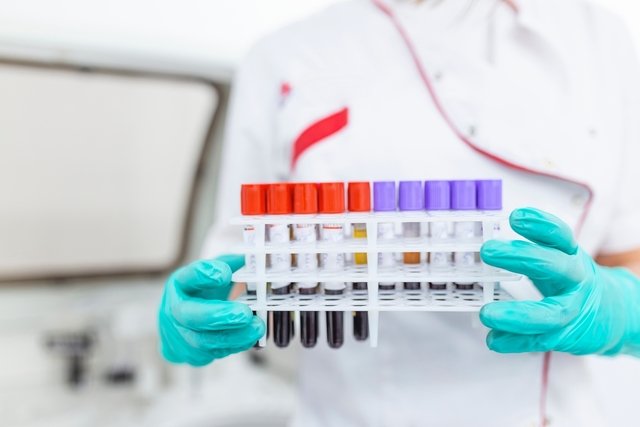Testosterone is a hormone that both men and women have circulating in the blood. It is bound to proteins, like albumin or globulin, or it circulates freely to perform its function in the body.
A testosterone test may be ordered when a patients presents with signs and symptoms that may suggest a high or low level of this hormone, such as changes to the menstrual cycle, early-onset puberty, erectile dysfunction or infertility.
Testosterone levels should be within normal ranges, which can vary depending on the patient's gender and age. Abnormal levels should be evaluated by a doctor, who will consider the results against the patient's general health status.

What it tests
Free and total testosterone tests are used to evaluate testosterone levels in men and women. They can be useful for investigating several health conditions, like erectile dysfunction, reduced libido and changes in the menstrual cycle.
The types of testosterone that can be measured are:
- Total testosterone, which is the total amount of testosterone produced in the body that is bound to protein
- Free testosterone, which corresponds to 2 to 3% of total testosterone, and is not linked to any proteins. It is absorbed and exerts its function in the body
Normally, the doctor will order both both free and total testosterone tests to assess the patient's health status.
When it is ordered
The total and free testosterone tests may be ordered by your doctor to assess the following conditions:
- Reduced libido
- Difficulty getting pregnant
- Erectile dysfunction
- Suspected abnormalities in the suprarenal or pituitary glands
- Changes to the menstrual cycle
- Evaluating PCOS
- Investigating for ovarian masses or testicular changes
- Diagnosing early or late-onset puberty
Although total and free testosterone tests can be ordered for several situations, these are often ordered with other tests, including complete blood count and other hormone levels. This allows the doctor to reach a more accurate diagnosis to initiate the most optimal treatment.
Normal levels
Normal levels may vary according to the laboratory in where the exam is done,as different methodologies can be applied, and may vary according to age.
References ranges for total testosterone
Generally, the normal ranges for total testosterone are:
- Men between 22 and 49 years: 241 - 827 ng/dL
- Men over 50 years: 86,49 - 788,22 ng/dL
- Women between 16 and 21 years: 17,55 - 50,41 ng/dL
- Women over 21 years: 12,09 - 59,46 ng/dL
- Menopausal women: up to 48,93 ng/dL
Total testosterone result should be evaluated by your doctor, who should consider the free testosterone result and any other hormonal tests that may have been ordered.
References ranges for free testosterone
The following table outlines the normal ranges value for free testosterone in the blood according to men's age. The normal range may also vary according to the laboratory:
The following table outlines the reference ranges for free testosterone in the blood according to woman's age and menstrual cycle phase. This result may also vary according to the laboratory:
What results mean
The result of the free and total testosterone tests should be evaluated together by the ordered doctor. He or she will also take other factors into account, such as the patient's age, the phase of the menstrual cycle (for women), physical activity level and health history.
Low testosterone levels
Testosterone levels may be low in cases of hypogonadism, testicle removal, Klinefelter syndrome, uremia, hemodialysis, liver failure, excessive alcohol consumption by men and use of medications such as digoxin, spironolactone and acarbose.
Testicular injuries from trauma, infection or alcohol abuse, for example, or delayed puberty can also lead to low testosterone levels.
Check out natural testosterone boosters that you can use to complement the treatment of low testosterone levels.
High testosterone levels
Testosterone levels can be high in cases of early-onset puberty, adrenal hyperplasia, trophoblastic disease during pregnancy, ovarian cancer, cirrhosis, hyperthyroidism, and use of certain medications, like seizure meds, barbituates, estrogen and birth control.
Learn more about what causes high testosterone levels in women and how it is treated.
